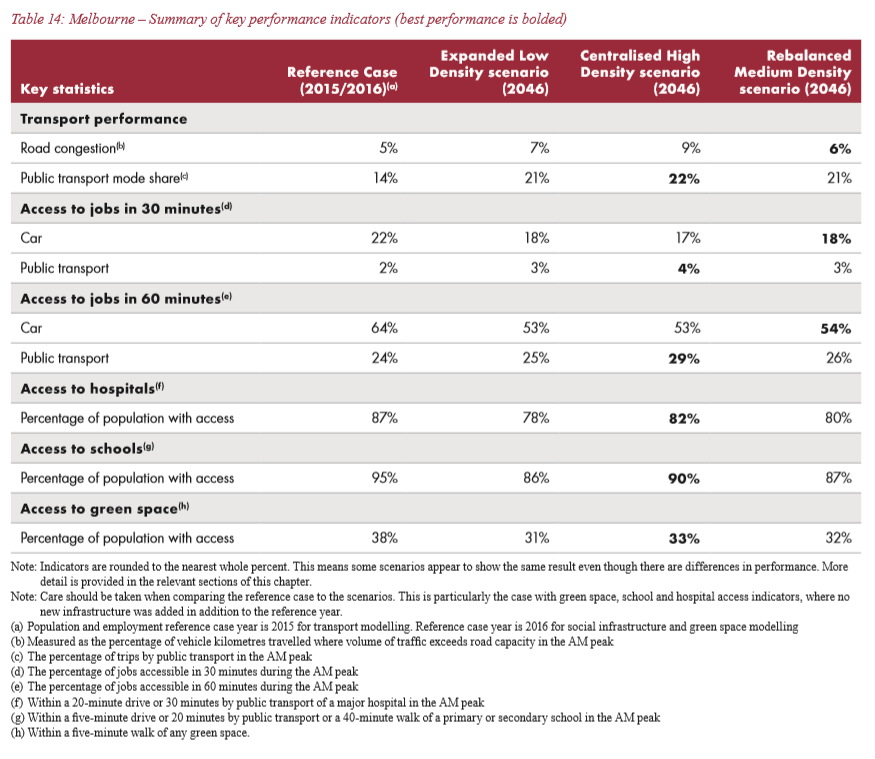It’s almost amusing watching a desperate Victorian Government with siding polls attempt to address the crush-loading of Melbourne. Last week we saw $10bn hosed into a new airport rail link of highly questionable benefit. Today we get trains, trains, trains:
The final unfinished section of the “skyrail” through Melbourne’s south-east is due to open on June 18, The Age can reveal, ushering in a major boost to services on the choked Pakenham and Cranbourne lines.
…But passengers on the Dandenong corridor are set for 20 days of frustration from next month when part of the line is shut down before the full skyrail opens.
…The South Morang and Hurstbridge lines in Melbourne’s north are also due to get a complete timetable overhaul later this year, once the $600 million Mernda line extension is built and tunnelling and level crossing works are finished on the Hurstbridge line.
The South Morang line, which services Melbourne’s booming northern suburbs, will be extended eight kilometres north to Mernda, with three new stations to open, adding an expected 8000 extra commuters a day to the line.
8000 will cover about one year of population growth. But wait, there’s more:
High-speed trains linking Melbourne and Geelong is the government’s new plan for the booming west, despite the multibillion dollar Regional Rail Link opening three years ago.
The Andrews Government will set aside $50 million in the 2018/19 state budget for detailed planning to investigate a fast rail link connecting the two cities, with a business case set to follow.
The trains under consideration would be capable of travelling at speeds of 250 to 300 kilometres an hour.
A map of the proposal shows the Geelong line connecting to Melbourne Airport via a new rail link from Sunshine.
…The commitment comes three years after the multibillion-dollar Regional Rail Link opened.
Well over $3 billion was spent on new tracks linking Southern Cross Station and West Werribee, but overcrowding and delays have plagued V/Line trains since the regional rail opened, Victoria’s Deputy Auditor General found in a report last year.
$3bn plus down the dunny in three years in other words. The solution? Throw away more money even faster.
None of this is going to fix anything while the city fills at 125k people per annum. As Infrastructure Australia has made clear, even if we had proper planning living standards will tumble under such population growth scenarios:

This is not planning, it’s crazed infrastructure roulette. Driven by the Federal Government’s mad gambit on mass immigration, Melbourne is chasing it’s tail into a Keynsian dystopia, as the economic legend once said:
If the Treasury were to fill old bottles with banknotes, bury them at suitable depths in disused coalmines which are then filled up to the surface with town rubbish, and leave it to private enterprise on well-tried principles of laissez-faire to dig the notes up again (the right to do so being obtained, of course, by tendering for leases of the note-bearing territory), there need be no more unemployment and, with the help of the repercussions, the real income of the community, and its capital wealth also, would probably become a good deal greater than it actually is. It would, indeed, be more sensible to build houses and the like; but if there are political and practical difficulties in the way of this, the above would be better than nothing.
Or worse than nothing when you’re using population QE to devalue an extant highly enviable lifestyle. I’m all for counter-cyclical Keynesian spending to mitigate the business cycle but this is not that. It is a reformless and anti-competitive cabal of realty rent seekers taking control of policy such that public budgets will be exhausted when the business cycle does end.
Cut immigration.

